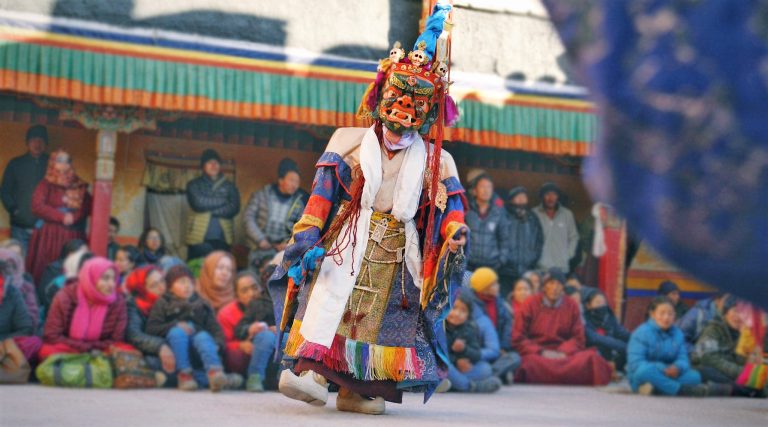Ladakh isn’t just about mountains and monasteries—it’s a living geological museum. From magnetic anomalies to fossil-rich zones, this guide uncovers natural wonders that tell the story of Earth’s evolution, and how to responsibly explore them.
Location: Near Nimmu, Leh–Kargil–Srinagar Highway
Coordinates: 34.1702° N, 77.5196° E
What’s Unique: Vehicles appear to roll uphill against gravity due to an optical illusion created by the layout of surrounding slopes and road. This phenomenon stirs curiosity and awe among travelers.
How to Experience:
Park in the marked “Magnetic Hill” zone.
Put your car in neutral and observe.
Ideal during early mornings (less traffic). Caution: It’s a visual illusion, not magnetic force. No need for scientific equipment.
Location: Lamayuru Village, Khalsi Block
Coordinates: 34.2833° N, 76.7833° E
What’s Unique: The yellowish, flaky terrain resembles the moon’s surface due to eroded clay formations from an ancient lakebed.
How to Experience:
Stay overnight in Lamayuru village.
Visit during sunrise/sunset for dramatic views.
Pair the visit with Lamayuru Monastery tour.
Ideal Season: April to October
Local Insights: Referred to in Ladakhi legends as a divine terrain blessed by the gods.
Location: Between Gya village (Upshi block) and Meru along Leh–Manali highway
Coordinates: Approx. 33.8332° N, 77.6460° E
What’s Unique: Fossils of ancient marine life from the Tethys Sea era (over 200 million years ago), preserved in limestone and shale.
How to Explore:
Hire local guides from Gya or Rumtse village.
Carry a hand lens for fossil spotting.
Avoid collecting fossils—preserve them in situ. Note: This region offers insight into the tectonic upliftment of the Himalayas.
Location: Along the Zanskar River near Chilling
Coordinates: 34.0964° N, 77.2593° E
What’s Unique: Black basaltic flows and columnar joints—geological evidence of volcanic activity and cooling magma from millions of years ago.
Activities: Combine with river rafting or the Chadar winter trek.
Organization: Ladakh Ecological Development Group (LEDeG)
Base: Leh Town
Offerings:
Guided geology tours
Workshops on local rock formations, climate resilience
Interactions with local geologists and conservationists
Why Important: Promotes responsible, low-impact travel; supports local knowledge systems.
Contact: LEDeG Official Website
Location: Between Nyoma and Tsaga villages
Coordinates: Approx. 32.8736° N, 78.5482° E
What’s Unique: Ancient tree remnants turned into stone over millennia due to mineralization.
Best With: A local guide or forest officer for interpretation.
Note: Rare to spot—do not touch or remove samples.
Location: Padum–Zangla road
Unique Feature: Iron-rich mineral layers create vivid reds, yellows, and purples across vertical canyon faces.
Season: Accessible May–October
Activity: Photography, geology sketching, mindful hiking.
Location: Near Tso Kar Lake, Changthang
Coordinates: 33.4761° N, 78.0084° E
What’s Unique: An unusual sinkhole and eroded crater-like depression; debated origin—glacial or seismic.
Caution: Remote; go with support vehicles and satellite phones.
Location: Hanle–Photi La belt
Unique Features:
White salt-crusted flats formed by evaporated ancient lakes.
Rare sightings of gypsum and borax deposits.
Recommended With: Stargazing trip to Indian Astronomical Observatory, Hanle.
Coordinates: 33.8711° N, 77.8362° E
Highlights:
Eroded sandstone tunnels and wind-carved arches.
Resemble miniature slot canyons.
Travel Tip: Explore during golden hour; some trails are used by shepherds.

Nam dapibus nisl vitae elit fringilla rutrum. Aenean sollicitudin, erat a elementum rutrum, neque sem pretium metus, quis mollis nisl nunc et massa
Ladakh’s terrain is a rare book written over millions of years. When you walk its valleys or study its stones, you aren’t just sightseeing—you’re time-traveling through Earth’s memory. Travel slowly, curiously, and respectfully.
Let me know if you’d like a printable guide, GPX tracks, or LEDeG contacts and eco-tour map added.
